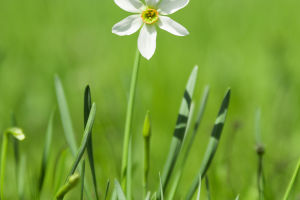Peanut cactus is a common cactus plant known for its low, tufted growth form and slender columnar stems.
It is popular in gardening for its beautiful, mostly red flowers.
Grafting is a common propagation technique to increase the growth rate of the Peanut cactus, improve disease resistance, or create a more ornamental plant form.
Grafting allows the Peanut cactus to be attached to other, stronger rootstocks to achieve these goals.
The process of grafting a Peanut cactus requires skill and patience and involves cutting and attaching a Peanut cactus stem segment to another cactus plant, such as Hylocereus or Cereus peruvianus, or a strong cactus rootstock, bringing the cambium of the two into close contact to promote healing and subsequent growth. This method can produce a more lush Peanut cactus in a shorter time or make it more difficult to cultivate.
The grafting process begins with selecting the right rootstock. The selection of rootstock is crucial, as different rootstocks will have different effects on the growth after grafting.
Cacti that are strong in vitality, easy to heal, and closely related to the Peanut cactus is usually selected as rootstocks, such as "Tripterygium" or "Opuntia". These cacti have strong root systems that can provide sufficient water and nutrient support for the Peanut cactus.
One of the keys to ensuring a successful graft is to select a healthy and vigorous rootstock, and the surface of the rootstock should be smooth and free of pests and diseases.
Next, the Peanut cactus is prepared for grafting. Usually, the stem section of the Peanut cactus is selected as the scion. The selected scion should be a healthy, pest-free, and thicker stem. After selecting the scion, it is cut from the mother plant, ensuring that the cut is flat and undamaged.
Using a sharp tool is very important, as a clean cut can minimize damage to plant tissue and promote healing. The sharp tool must also be sterilized before grafting to prevent bacteria or other pathogens from invading the cut.
Cut the top of the stock flat, usually 5 to 10 cm from the ground, to leave enough space for the scion. The cut should be as smooth as possible, and the cambium should be visible. The scion also needs to be treated accordingly.
Generally, the bottom of the scion is cut flat, making sure that the cut is the same size as the cut of the stock and aligning the cambium of the two.
This step is the key to a successful graft because the cambium of the two must be perfectly aligned to ensure the effective transportation of nutrients and water. If the alignment is not accurate, the survival rate of the graft will be greatly reduced.
After aligning the cambium, gently place the scion on the cut of the stock to ensure that the two fit tightly. To ensure that the two remain stable during the healing process, a rubber band or plastic rope is usually used to gently fix the joint between the scion and the stock.
The fixing process should not be too tight to avoid excessive pressure on the plant tissue, which can cause tissue necrosis, but it should not be too loose; otherwise, the scion will easily shift and affect the healing effect.
After fixing, place the grafted plant in a cool and dry environment, avoiding direct sunlight and excessive moisture. It is very important to control the initial environment, especially before the wound is completely healed. Excessive light or moisture may cause the scion to rot or dry up.
The healing process usually takes several weeks. During this period, the environment must be kept stable, and excessive interference should be avoided.
After about one to two weeks, the light intensity can be gradually increased, while the air humidity can be appropriately reduced to promote the normal growth of the plant.
During the healing process, if the scion is found to be partially soft or other abnormal phenomena occur, the grafting point must be checked in time, and corresponding measures must be taken.
Although the grafting process requires certain experience and skills, once mastered, the benefits are significant. Grafting technology can break the natural limitations of plant growth and give plants more possibilities.
For gardening enthusiasts who like to try new things, the grafting of the Peanut cactus is not only a technical challenge but also an opportunity to show creativity and gardening skills.


